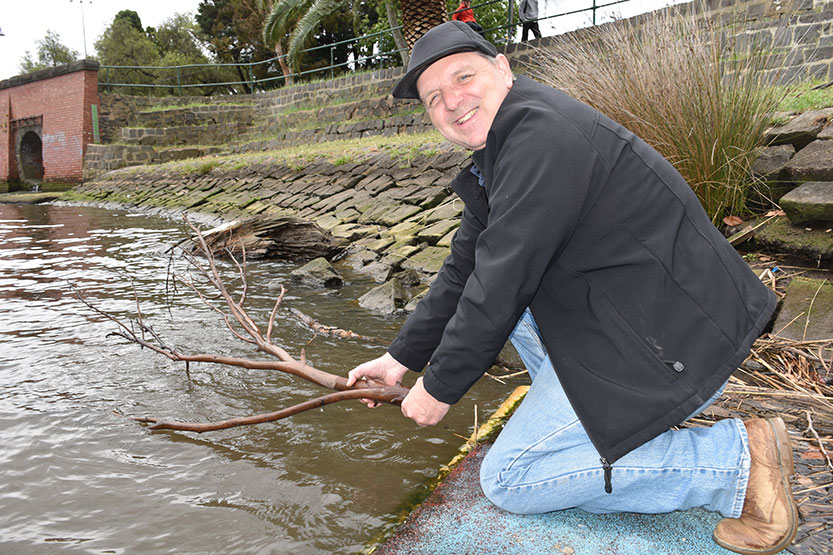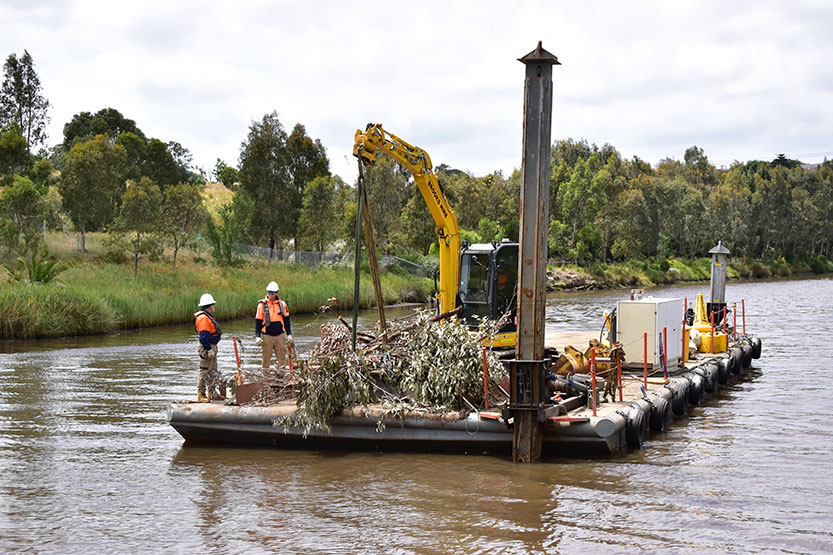The man behind 300,000 fish
Anthony Forster thinks like a fisherman and knows they love a good yarn.
The state’s Inland Fisheries manager cut his teeth on the Maribyrnong, as a young Footscray boy.
He told his parents he would look after his sister as long as he could take her fishing.
When they agreed, he dinked her down to the river where they caught bream and mullet on his home-made rod and an eel on a piece of salami.
Those formative childhood experiences have set the scene for a life in fisheries and a leading role in the recent restocking of the Maribyrnong River with native fish.
The Victorian Fisheries Authority (VFA) has released 300,000 estuary perch during the past three years, 100,000 in the past month, with the aim of creating a self-sustaining fishery.
If the perch were to survive, they needed habitat, Anthony said, and snags, the pieces of fallen timber that waterways authorities usually clean out, are the perfect solution.
Until recently, however, pollution had been winning out on the river with people favouring industry over fish and boating over snags.
“Historically the river has been neglected, dredged and rerouted. Fish habitat has been covered in industrial pollution,” Anthony told North West City News.
The past 20 years have been more hopeful and “the community has taken on a conservation perspective.”
Anthony said the time was ripe for revitalising the river and the VFA had received wide community support for its radical intervention.
But he reiterated that a habitat was vital. It’s not enough to release them at three centimetres in size and expect them to reach two to three kilograms without assistance.
Anthony admitted it would take a while to change attitudes about natural snags. In the meantime, the VFA has constructed 33 super snags out of old trees and rocks, each 10-by-10 metres, and submerged them along the river between Flemington and Avondale Heights.
“We love snags. Fish love snags. They create great feeding and breeding opportunities,” Anthony said. “The interesting thing about estuary perch is that they really love habitat more than other species. You only find them around bridge pylons.”
The perch will begin their journey between Avondale Heights and Brimbank and as they grow and feed naturally they’ll move down the river. This is the first attempt to restock a major Melbourne river since the early 1900s when estuary perch were released into the Yarra. “The time was ripe to create an urban fishery,” Anthony said, one close to parks and picnic areas that families can use.
The $800,000 project was funded by the VFA, Melbourne Water and recreational fishing licence fees. The fish will be ready for catching in around three years •

The Movement Refinery: 20 years and still going strong






 Download the Latest Edition
Download the Latest Edition